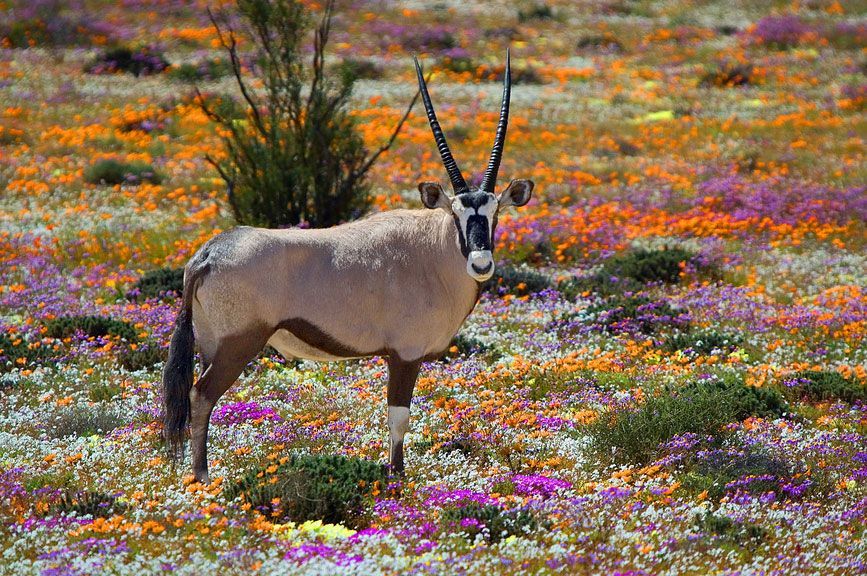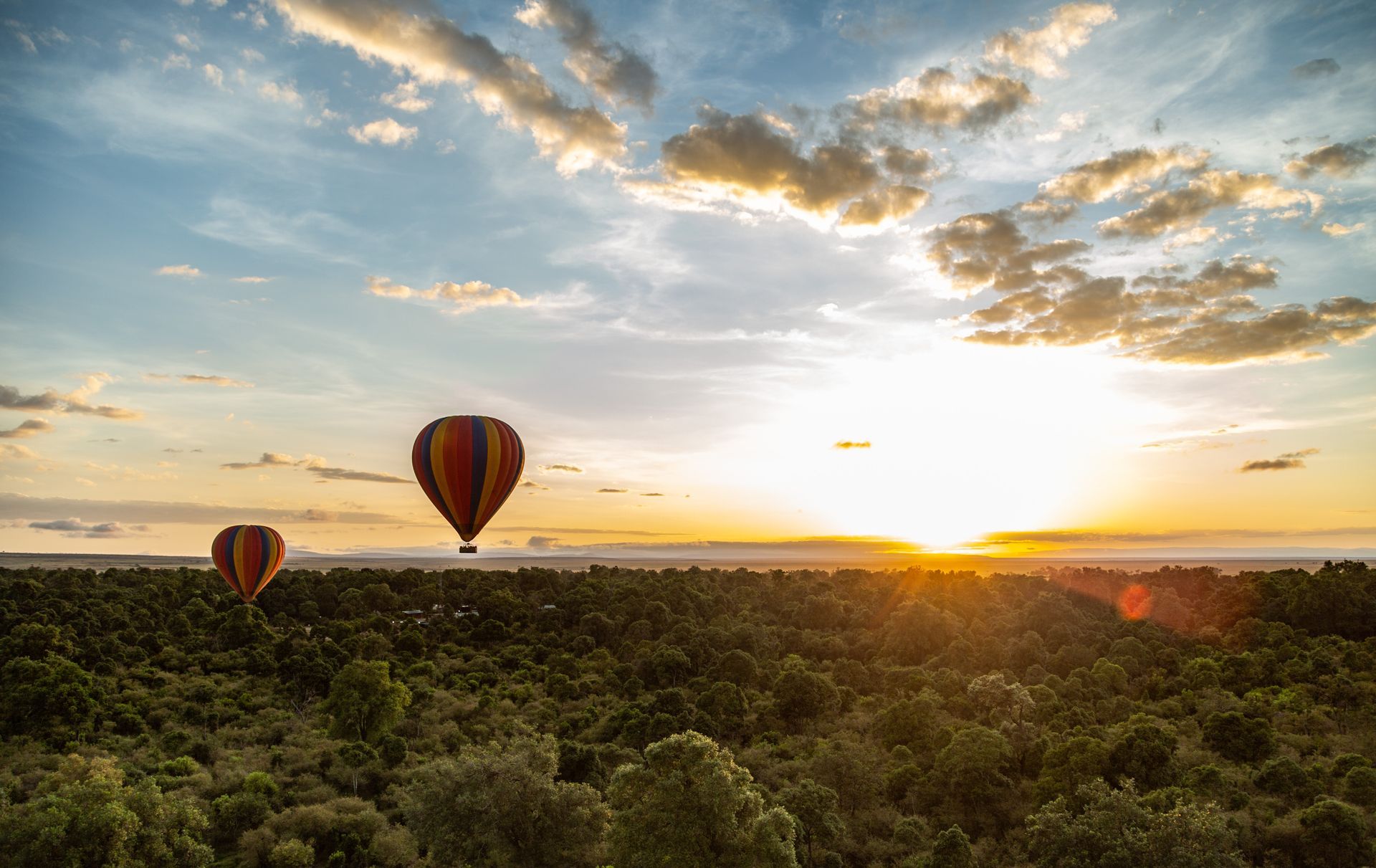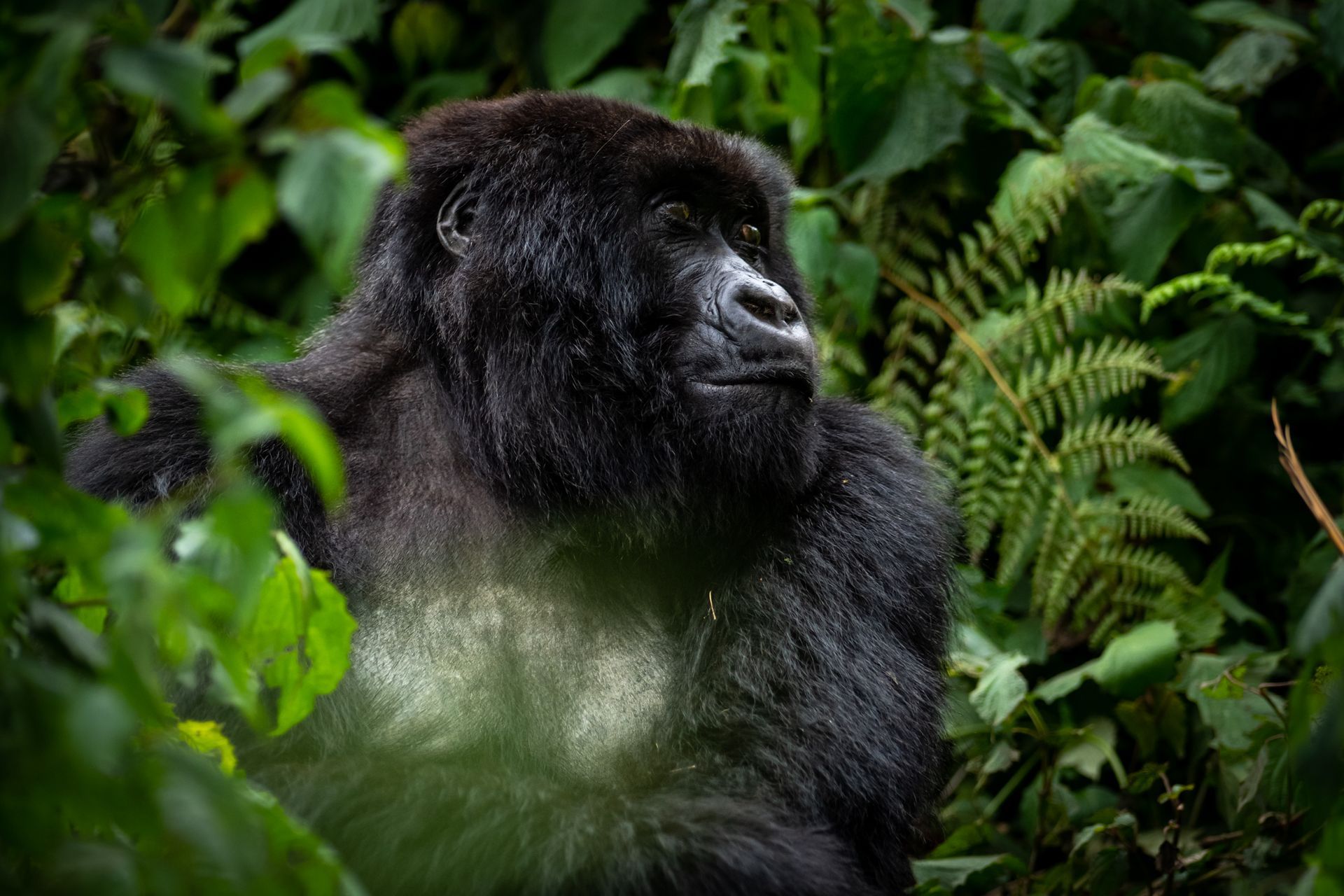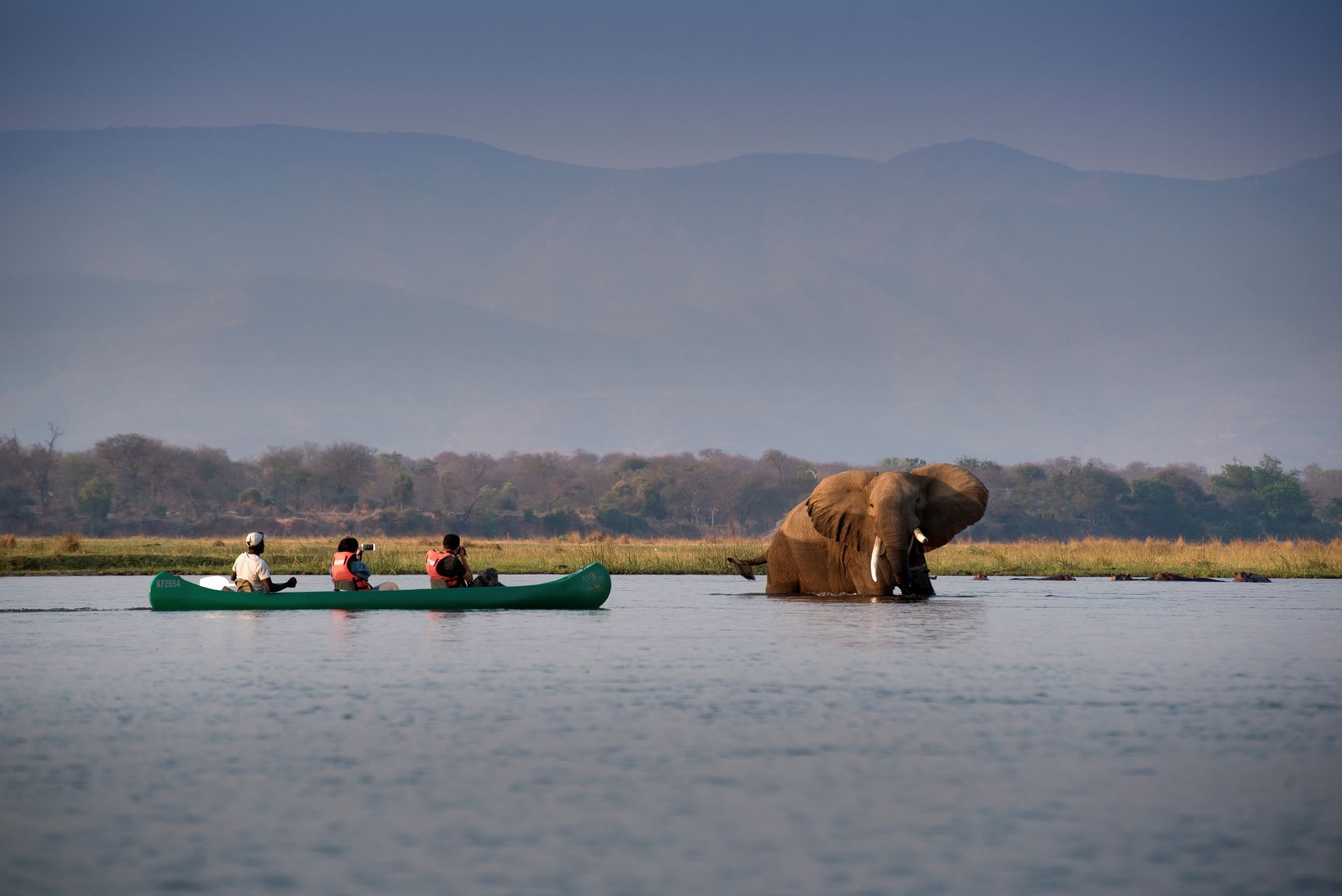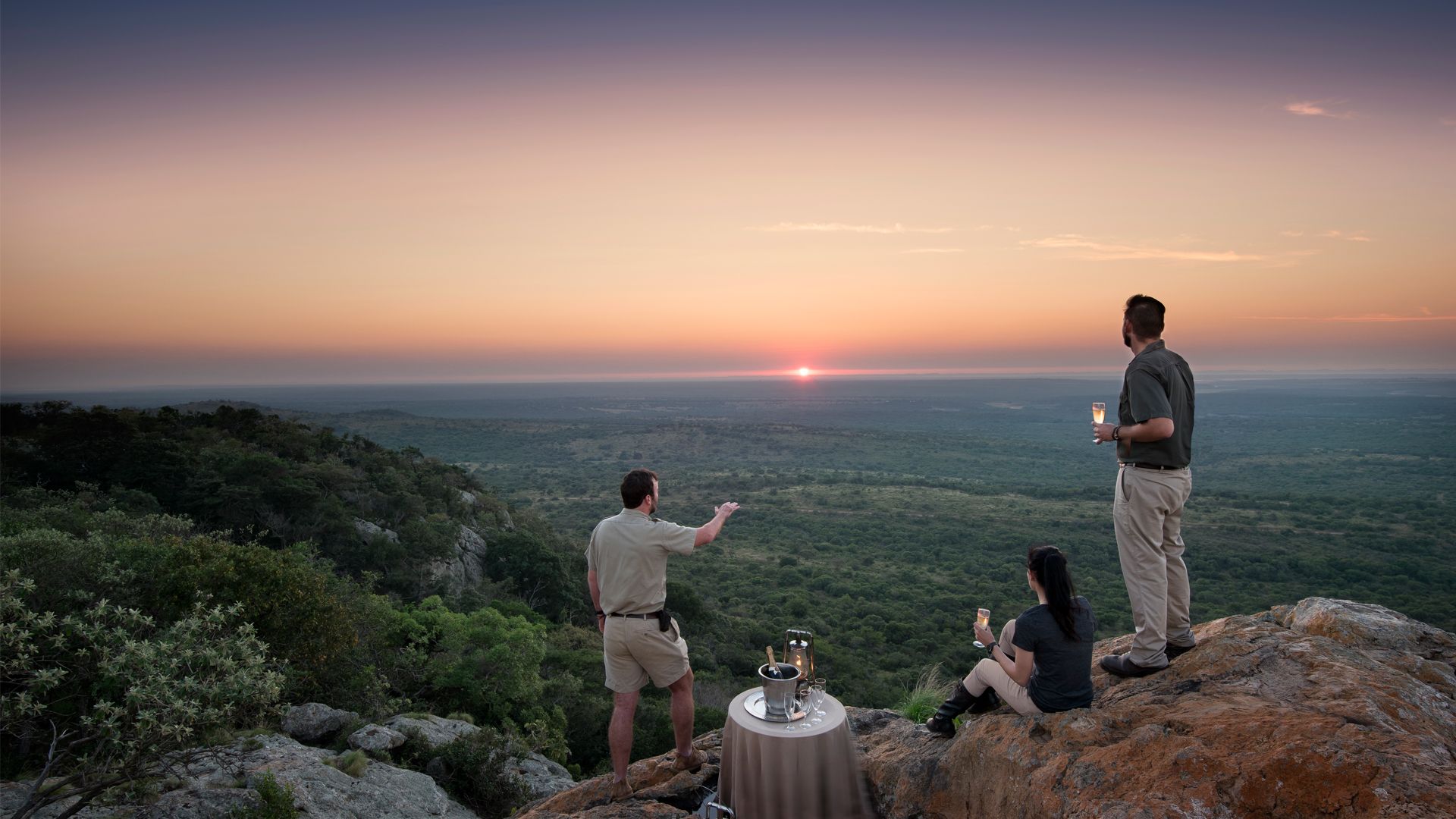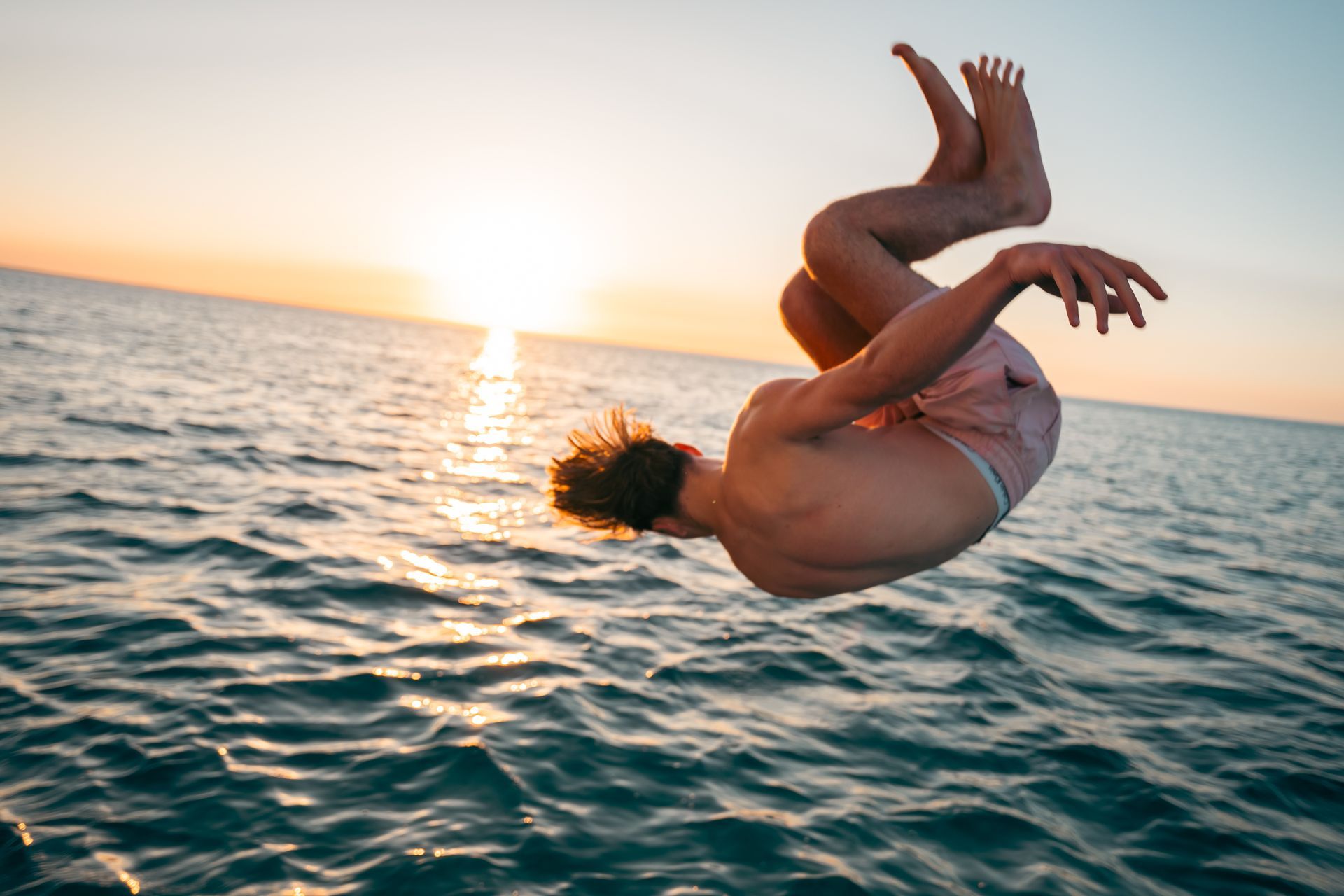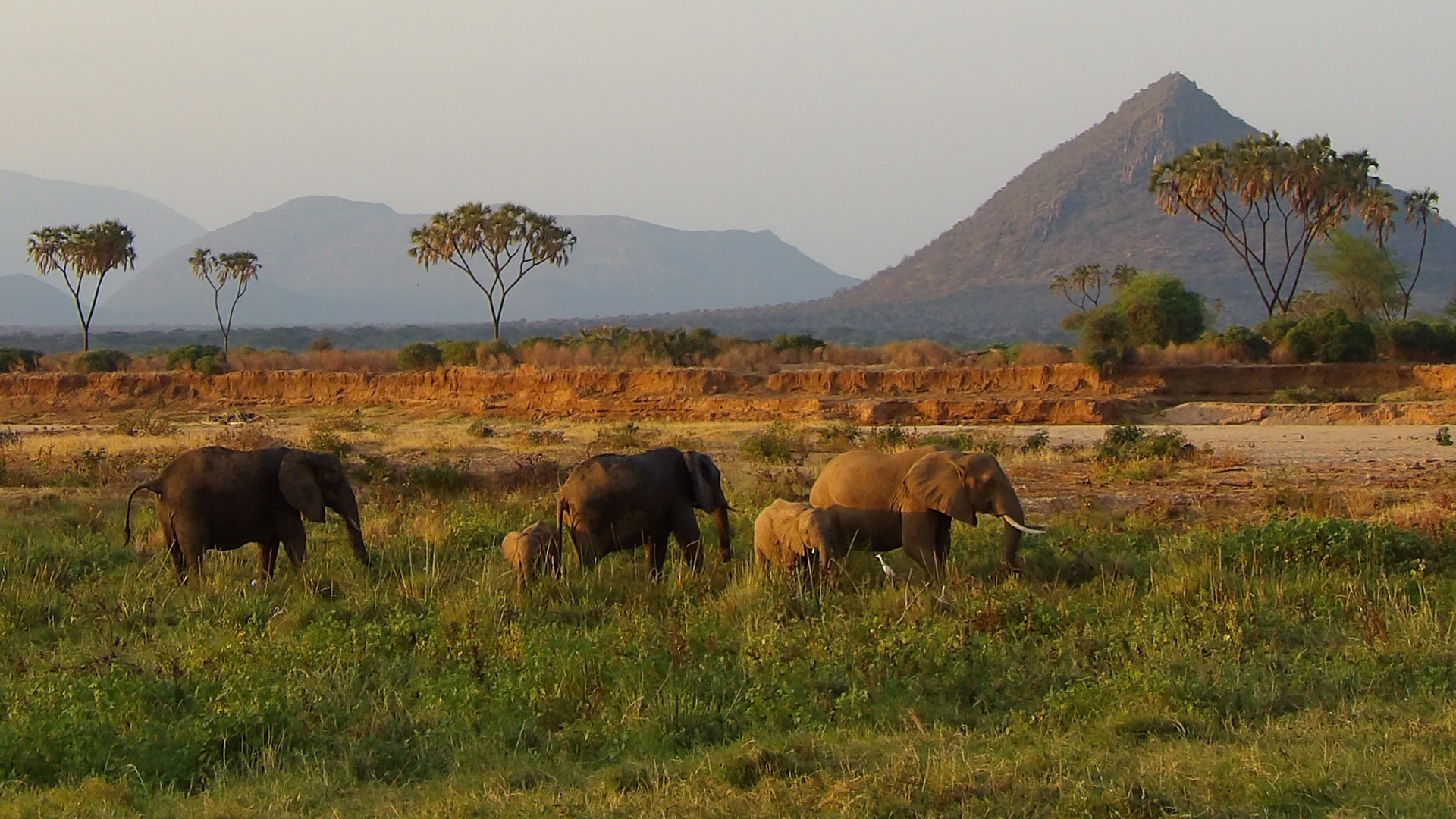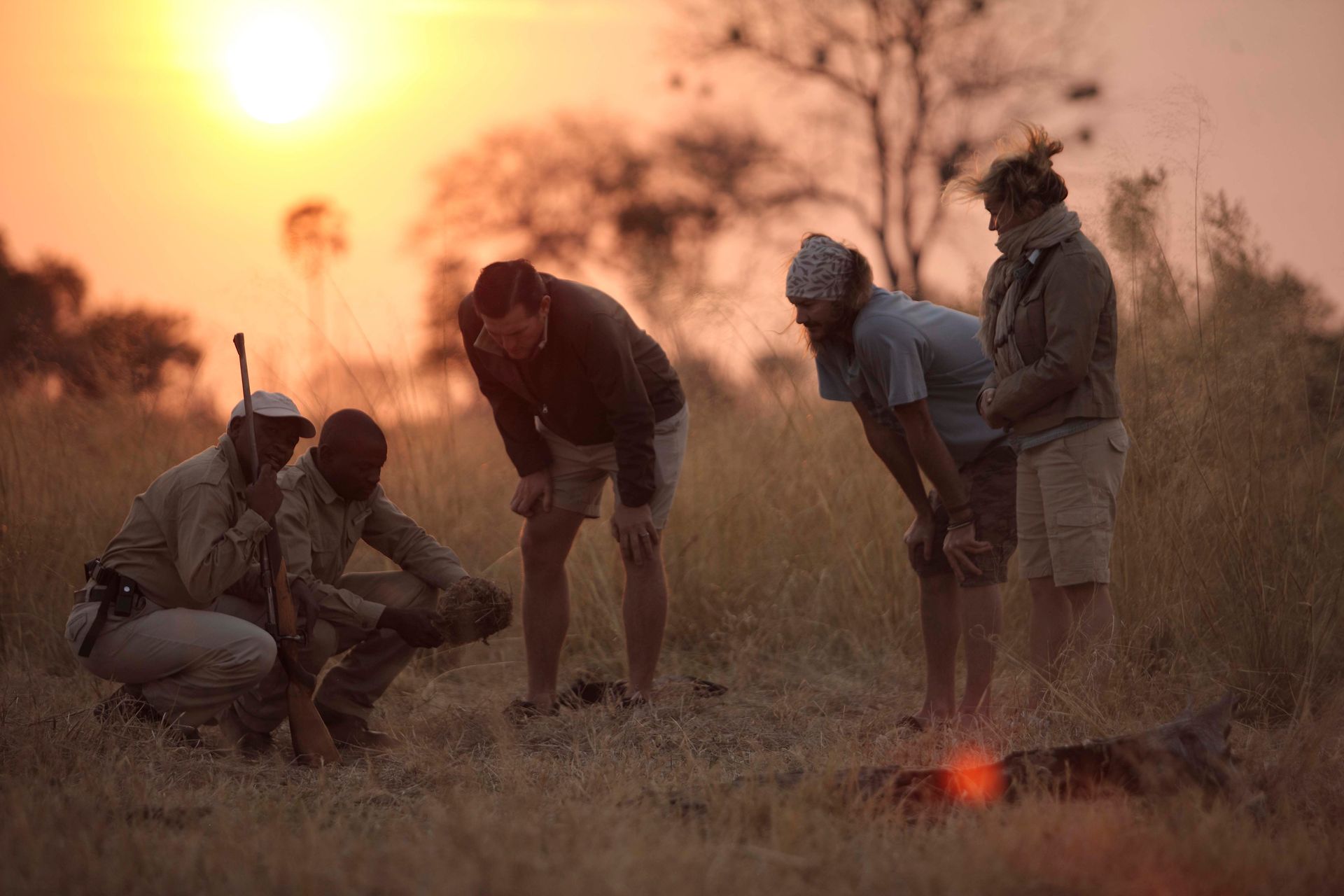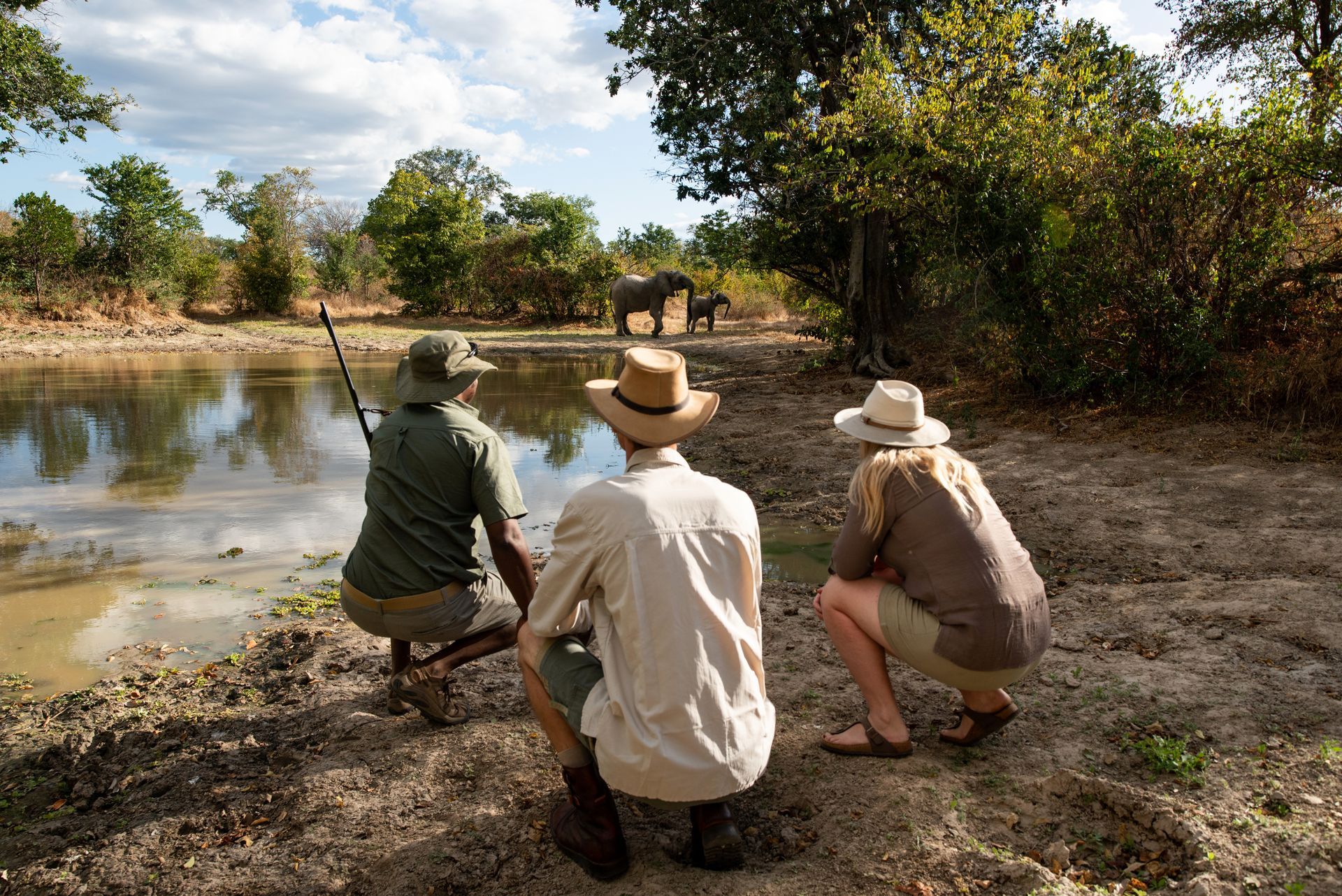Spring in Africa
A Season of Renewal, Wonder and Wild Surprises
There’s something quietly magical about spring in Africa. The earth exhales after the cool, dry months; landscapes burst into colour and life; and wildlife greets the season with tiny new arrivals. From carpets of wildflowers that ripple across South Africa’s west coast to the gentle splash of whale sharks gliding through Mozambique’s turquoise waters, spring is a season of contrasts.
Spring in Africa is tender and full of promise, a season that whispers rather than shouts, inviting you to lean in, slow down and see nature’s quiet miracles unfold.
Baby Mountain Gorillas in Uganda
In the emerald forests of Bwindi Impenetrable National Park, spring brings a tender kind of wonder. While mountain gorillas don’t have a single fixed birthing season, many infants are born around the time when food is most plentiful. By September and October, the forest is lush after the long rains, offering ample forage for nursing mothers and plenty of opportunities for visitors to glimpse tiny new arrivals.
Encountering gorillas is always profound, but seeing a mother gently cradle her infant or watching a wide-eyed youngster cling to her back is something else entirely. These baby gorillas, weighing barely two kilograms at birth, grow quickly. Curious, playful and often tumbling around, they stay under the watchful eye of a silverback.
Each trekking permit purchased helps to fund the protection of these critically endangered primates and the communities that share their home. It’s a reminder that by stepping softly into their world, you become part of their survival story.
Best time to go: September to November offers lush scenery, fewer tourists and a good chance of seeing gorilla families with infants.
Travel tip: Trekking can be muddy in spring so pack sturdy boots and gloves. Hiring a porter not only helps on steep trails but also supports local livelihoods.
Namaqualand & West Coast Flowers
Every year, as winter loosens its grip, something extraordinary happens along South Africa’s west coast. The arid landscapes of Namaqualand, so often thought of as scrubby and stark, transform into one of the world’s greatest natural flower shows.
From late August through September, the fields seem to forget themselves. Suddenly, they explode into rolling carpets of colour - orange daisies, delicate pink vygies, and golden gousblom - all turning their faces to the sun. It’s an annual spectacle so fleeting that the locals call it “flower season” with a kind of reverence, knowing how quickly it comes and goes.
The West Coast National Park, just a stone’s throw from Cape Town, has its own secret: the Postberg section, closed for most of the year, opens only during flower season. Here, antelope graze against a backdrop of blooms, and the Atlantic shimmers just beyond, reminding you that in South Africa, beauty always arrives in layers.
What makes this even more special is the way the flowers respond to light. They only open fully when the sun is shining, which means every day’s display is unique. You might walk a trail one morning and return in the afternoon to a completely different palette.
Best time to go: Mid-August to late September, with peak viewing usually in early September (depending on rainfall).
Travel tip: Follow the sun! The flowers open as the light moves across the sky, so plan to travel west to east during the day for the most dazzling displays.
Whale Sharks in Mozambique
Off the coast of Mozambique, spring marks the beginning of one of the ocean’s most extraordinary gatherings. From October through February, plankton-rich waters draw in the world’s largest fish, the gentle, spotted whale shark. Places like Tofo Beach and the Bazaruto Archipelago are among the best in the world to swim alongside these giants.
Often stretching up to 12 metres, whale sharks are filter-feeders, cruising slowly with mouths wide open to sieve out plankton and tiny fish. Sharing the water with them is a humbling experience: no rush, no frenzy, just the silent rhythm of a giant moving effortlessly through the blue.
This migration is more than a spectacle; it’s a vital opportunity for conservation. Local operators partner with marine researchers, encouraging travellers to photograph the unique spot patterns on each shark’s flank. These images are uploaded to global databases, helping scientists track individuals across oceans and deepen our understanding of their movements. In this way, every encounter adds to the larger story of whale shark survival.
Best time to go: October to February, when sightings are at their most reliable.
Travel tip: Choose an operator committed to ethical marine tourism (respectful distances, no touching, reef-safe sunscreen) to ensure that these encounters protect the very creatures you’ve come to admire.
Southern Tanzania Safaris
For travellers seeking the thrill of a true wilderness without the crush of crowds, spring in southern Tanzania is a revelation. While the Great Migration draws thousands north to the Serengeti, the vast, untamed parks of the south - Ruaha, Katavi, and Nyerere (formerly Selous) - remain quietly magnificent.
September and October mark the tail end of the dry season here. Waterholes shrink, rivers run low, and wildlife congregates in great numbers, making sightings both dramatic and intimate. In Ruaha, elephant herds gather along the Great Ruaha River; in Katavi, hippos pack into dwindling pools and lions patrol the plains; while Nyerere offers a rare chance to combine game drives with boat safaris, gliding silently past pods of hippo and basking crocodiles.
What sets these parks apart is their sense of solitude. It’s not unusual to spend hours on safari without seeing another vehicle. Every encounter feels personal. Whether it’s a leopard draped in the branches of a sausage tree or a herd of buffalo raising a cloud of dust as they move across the savannah.
Best time to go: September to October, when wildlife is concentrated and before the short rains arrive.
Travel tip: With fewer lodges than in the north, accommodation here is often small and characterful, adding to the sense of exclusivity. Early booking is key, especially for Katavi, which only a handful of travellers experience each year.
Kruger & Baby Season
Spring in South Africa’s Kruger National Park offers the best of two worlds. In September and early October, the bush is still dry and open, making wildlife easier to spot. Herds cluster around rivers and waterholes, predators are on the move, and the risk of mosquitoes is at its lowest before the summer rains.
Then, almost overnight, the first showers arrive. By November, the park shifts into a new rhythm: grasses flush green, trees burst into leaf, and the air hums with life. This is when baby season begins in earnest. Impalas drop their lambs within weeks of each other, creating crèches of wide-eyed youngsters that totter unsteadily on spindly legs. Zebras, wildebeest and warthogs follow, filling the plains with new life and giving predators plenty to watch.
Spring also brings a rush of migratory birds, returning from the north to breed and adding flashes of colour and song to the rejuvenated bush. For photographers and nature lovers, it’s a season of abundance.
Best time to go: September and October for clear game viewing; November if you want to witness the explosion of new life.
Travel tip: Stay a little longer. The contrast between late dry-season drama and early wet-season rejuvenation is remarkable, and seeing both sides of spring gives a deeper understanding of Kruger’s rhythms.
Kosi Bay Turtles
At the northern tip of KwaZulu-Natal, where South Africa brushes against Mozambique, lies Kosi Bay: a mosaic of lakes, estuaries, and beaches within the iSimangaliso Wetland Park. As spring deepens into November, these quiet sands become the stage for one of the oldest rituals on earth: the nesting of loggerhead and leatherback turtles.
Under the cover of darkness, female turtles (some weighing nearly half a tonne) heave themselves up the beach to dig nests and lay their eggs. It’s a labour that connects them to ancestors who have been returning to these very shores for thousands of years. With the guidance of experienced rangers, visitors can watch the spectacle from a respectful distance, listening to the waves while the stars blaze overhead.
The nesting season stretches from November to March, with hatchlings scrambling seaward from December onward. To witness it is to glimpse time slowed down, nature’s persistence written in sand and salt. Few experiences are more humbling, or more hopeful, than watching a tiny hatchling’s first journey toward the ocean.
Best time to go: November marks the start of the nesting season, with hatchlings appearing from late December.
Travel tip: Book a guided turtle walk through authorised operators only. It ensures minimal disturbance to the turtles while directly supporting the conservation that protects them.
Why Spring is the Perfect Time to Visit Africa
Spring in Africa is a season of renewal, where every corner of the continent seems to whisper a different kind of magic. Along South Africa’s west coast, deserts bloom into wildflower gardens; further north, Mozambique’s seas welcome the return of whale sharks, while in Uganda’s misty forests, baby mountain gorillas cling tightly to their mothers, wide-eyed and curious.
It’s also the season when southern Tanzania offers untamed safaris without the crowds, when Kruger fills with the wobbling steps of newborn antelope, and when ancient turtles return to Kosi Bay’s beaches to nest under the stars. Each encounter is tender, fleeting, and unforgettable—moments that remind you of nature’s cycles and your place within them.
For travellers, spring brings both abundance and intimacy: the joy of iconic wildlife and natural wonders, paired with the quiet of shoulder season. At Hassle-free Africa, we design journeys that capture this balance - crafting trips that let you wander through fields of daisies, watch a gorilla infant’s playful antics, or stand hushed as a turtle begins her moonlit climb.
Spring is Africa’s gentle invitation: come see the continent at its most alive, when every sunrise brings something new into the world.




